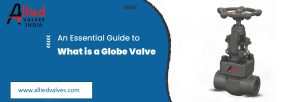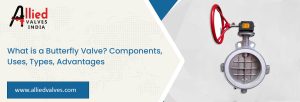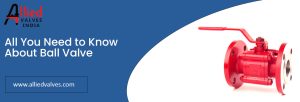What is a Butterfly Valve?
Butterfly valves are quarter-turn rotational motion valves used in pipelines for on-off or modulating services. They are lightweight, have a small installation footprint, have lower costs, and offer quick operation. The “butterfly” is a disk connected to a rod that rotates when the valve opens, allowing fluid to pass through, and closes when the rod rotates the disc by a quarter turn. They are used in various industries, particularly in water supply, collection, distribution, and pumping stations, and have a broad range of use cases, particularly in flow isolation.
Parts of Butterfly Valve:
Valve Body:
The Valve body fits between the pipe flanges. The common end connection types are flanged, double lug, and wafer types.
Disc:
The disc, attached to the valve body, acts as a gate to stop or throttle fluid flow. Variations in design, orientation, and material improve flow, sealing, and operating torque, like Hawle’s 9881k double eccentric disc.
Seat:
The 9881k series’ stainless steel weld-filled and microfinished integral body seat features a corrosion and erosion-resistant seat face, ensuring valve drop tight compliance with EN12266-A requirements.
Stem:
The Valve shaft, often also referred to as the stem, is the component that connects the disc to the actuation mechanism and transmits the torque through itself.
Seals:
Seals at valve interfaces ensure tight seals during operation and isolate process media for flexible, cost-effective design.
How Butterfly Valve work?
A butterfly valve is a simple device that controls fluid flow by rotating the valve disc. It provides bi-directional flow and shutoff capability but is not full-bore, making it unsuitable for pigging or swabbing. The valve is made of ductile iron with an epoxy powder coat and is typically operated by handwheels, gears, or actuators, depending on the application and technical specifications.
Advantages of Butterfly Valve:
1.Lightweight and Compact:
Butterfly valves, due to their compact design and smaller dimensions, offer lower installation footprints and lower costs for labor, equipment, and piping support.
2.Low Maintenance Requirements:
An inherently simple, economic design that consists of few moving parts, and hence fewer wear points, significantly reduces their maintenance requirements.
3.Fast Acting:
The actuation mechanism of larger butterfly valves often requires a gearbox, reducing torque but sacrificing speed, to complete valve closure with a 90° rotation.
4.Last Cost:
Butterfly valves are simpler to design, cost-effective, and require less material, especially in larger sizes above DN 300.
5.Vesratality:
Butterfly Valves have a wide variety of use cases, including the ability to be installed underground.
Applications of the Butterfly Valve:
Butterfly valves are used in a wide range of industries and applications, including pharmaceuticals, chemicals and oils, food, water supply, wastewater treatment, fire protection, gas supply, fuel handling, and sanitary fittings. Butterfly valves for water are used as control valves in pipes to turn off water flow. These valves are available in huge dimensions and are designed to handle slurries and liquids containing relatively substantial amounts of particles at low pressures. Stainless steel butterfly valves are employed in harsh and maritime environments due to their great durability and corrosion resistance.
Allied Valves India, a valve manufacturing company, is regarded as one of the leading valve manufacturer in Ahmedabad, producing high-quality butterfly valves to meet the diversified needs of a variety industries. Their emphasis on precision and dependability has won them a solid name in the marketplace.






